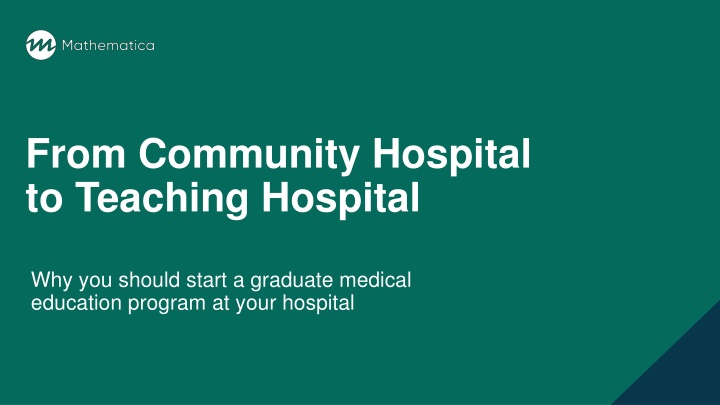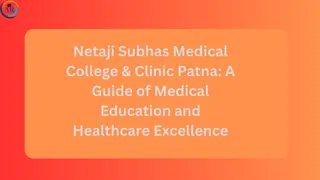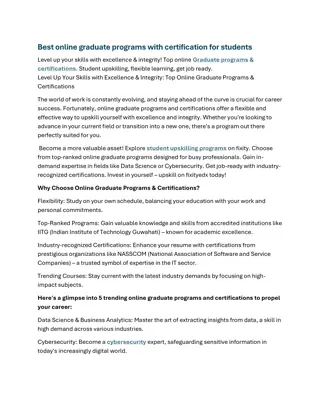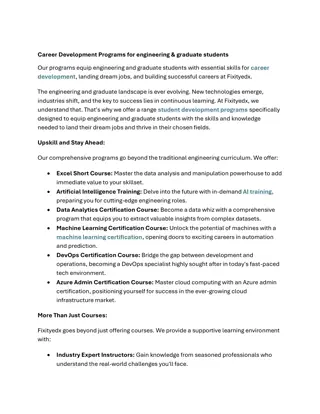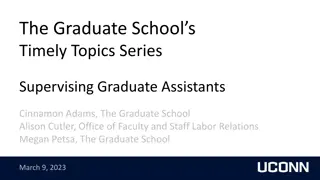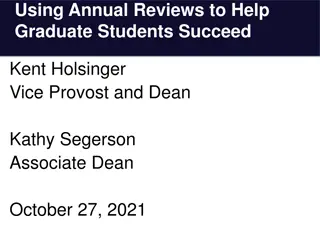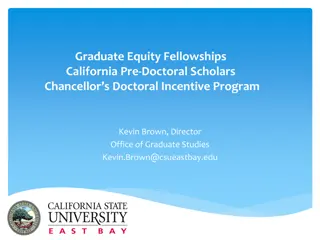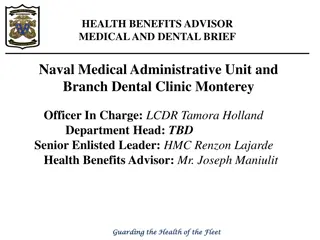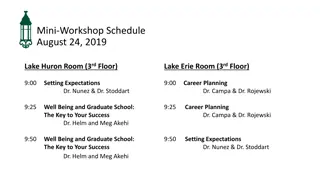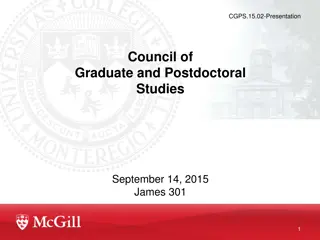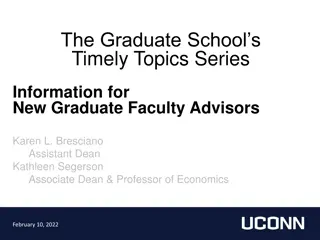Benefits of Starting Graduate Medical Education Program
Graduate medical education (GME) programs offer valuable specialty training for physicians post-medical school, addressing physician shortages and retaining talent locally. Though starting a GME program requires substantial investment, the long-term advantages in workforce development and community healthcare make it a strategic decision for hospitals.
Download Presentation

Please find below an Image/Link to download the presentation.
The content on the website is provided AS IS for your information and personal use only. It may not be sold, licensed, or shared on other websites without obtaining consent from the author.If you encounter any issues during the download, it is possible that the publisher has removed the file from their server.
You are allowed to download the files provided on this website for personal or commercial use, subject to the condition that they are used lawfully. All files are the property of their respective owners.
The content on the website is provided AS IS for your information and personal use only. It may not be sold, licensed, or shared on other websites without obtaining consent from the author.
E N D
Presentation Transcript
From Community Hospital to Teaching Hospital Why you should start a graduate medical education program at your hospital
What is graduate medical education (GME)? GME, most often called residency, is the on-the-job specialty training physicians receive after they graduate from medical school. As of January 2020, physicians must complete three years of residency to be licensed in California. Completing a residency is also a requirement to become board certified in a particular specialty (for example, family medicine, general surgery, or psychiatry). 2
Why should you consider starting a GME program? WORKFORCE! Most areas of California are experiencing a shortage of physicians in most specialties, but the workforce is particularly limited in primary care and psychiatry. In addition, more than a third of the current physician workforce is age 60 or older. Recruiting doctors has become challenging and expensive in many California communities. 3
GME offers the opportunity to grow your own. Studies show that most physicians work within 100 miles of where they finished their residency training. California has particularly fertile soil for retaining physicians, as most physicians who train in California stay in California, which ranks first in the United States for GME retention. 4
Well, if its so great, why isnt every hospital a teaching hospital? Starting a new GME program at a hospital that s never had one requires substantial investment.
Many expenses related to starting a GME program are up-front costs Outside consulting (feasibility studies, financial expertise, legal support) Infrastructure improvements (resident call rooms, workstations, simulators) Personnel (program coordinators, program directors) Accreditation fees Program costs before reimbursements become available, such as resident salaries and insurance 6
Nonfinancial barriers are also substantial Hospitals must also meet all the requirements for accreditation: Appropriate access to different educational experiences Appropriate number and types of patients Qualified program directors and designated institutional officials can be difficult to find and recruit. Support from the medical and support staff might be mixed, particularly in the beginning (people don t like giving up ownership and control to residents). The accreditation process can be lengthy, often taking two years or more. 7
However If, after some analysis, a hospital decides it has the capacity for a GME program, there can be MANY benefits.
Benefit #1 for hospitals starting a GME program for the first time FEDERAL FUNDING Hospitals that have never had a teaching program are eligible to draw substantial funding for new GME programs through Medicare. But the amount, as well as the number of residents that the Centers for Medicare & Medicaid Services will pay for, is LIMITED. There is also a LIMITED TIME period during which hospitals can set their maximum values after the process begins. This is one reason it is crucial to obtain financial expertise specific to Centers for Medicare & Medicaid Services cost reports in the early stages of planning, well before the clock starts ticking. 9
Though there are substantial start-up costs, many programs can become cost neutral (or even generate revenue) within 5 to 10 years.
Benefit #2 And did we mention Workforce New teaching hospitals say that the cost of starting a GME program is neutral after costs of recruiting new physicians are considered. They also say that, ultimately, it is less expensive to train a new doctor than to hire a trained one. New teaching hospitals say that physician recruitment is easier and that they can attract higher quality physicians after starting a teaching program. Teaching programs create an immediate and long-term physician workforce pipeline, as some graduates each year choose to stay and work in the community. Residents tend to be up to date with current standards of care, which can enhance the quality of care at the hospital. 11
Teaching programs increase physicians quality of life, increasing job satisfaction and retention Physician recruitment and retention: Teaching helps avoid physician burnout, promoting physicians wellness and providing additional career satisfaction. Residents often cover the less-desirable schedules and take care of the more mundane tasks. Many physicians feel there is substantial prestige associated with a faculty position. 12
Teaching programs improve the clinical quality and reputation of the hospital Improved hospital reputation The public perception is that teaching hospitals offer higher quality care. Faculty physicians stay updated with current standards of practice, including new standards in technology. Residents often build positive relationships within the community, promoting the hospital. Teaching hospitals can serve as innovation centers, implementing new care delivery models and producing graduates familiar with new models of care. Residents reflect the organizational culture of their training institution, extending its reputation beyond the walls of the institution. 13
There are benefits to the community Public health impact Residents directly address physician shortages in regions with unmet need. Residents can also provide direct care to underserved, low-income, and vulnerable populations. Regional economic impact Regional impacts include an increase in business volume, the creation of jobs, and the generation of tax revenue for local and state governments. In 2019, strategic consulting firm Tripp Umbach estimated that in Georgia, each resident generates an average of $300,000 in regional tax revenue. Sustainable economic impact Tripp Umbach also estimated that, in Georgia in 2019, each resident physician who remains in the region generates $2.2 million of economic impact annually and, on average, creates 14 additional jobs. 14
What about typical cost centers like primary care and psychiatry? Won t they be a drain on a hospital s already limited resources? These fields can bring in indirect revenue or new service lines to other areas of the hospital. They can produce shared savings or cost avoidance by reducing community dependence on emergency department and readmissions. Published data show that teaching hospitals have less mortality than non-teaching hospitals, have a quicker time to see patients, and have higher patient satisfaction. Through improved chronic disease management, these fields can reduce high cost and low reimbursement care, including length of hospital stay and other operating costs. 15
